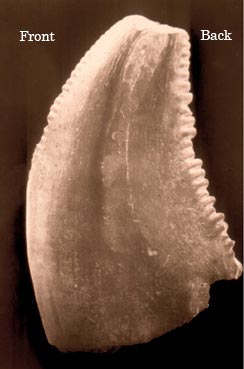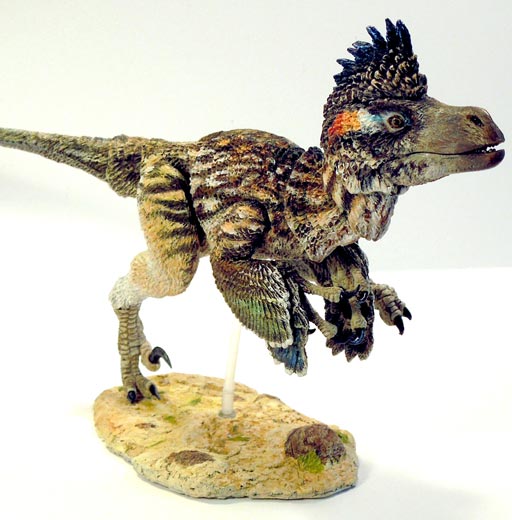Saurornitholestes from the South-eastern United States
Whilst in the course of writing the fact sheets for all the new dromaeosaurid models that are due to arrive when the “Beasts of the Mesozoic” stock comes in, team members have come across some fascinating information relating to Saurornitholestes langstoni. This member of the Dromaeosauridae, which was similar to Velociraptor, was originally described in 1978 from fossil material found in southern Alberta. Dromaeosaurids such as Saurornitholestes, or at least related species, may have roamed the south-east of the United States as well as the western USA and Canada.
A Single Tooth from Alabama (Saurornitholestine dromaeosaurids)

Picture credit: David R. Schwimmer
Isolated Dromaeosaurid Dinosaur Teeth
Isolated teeth have been found in North and South Carolina and assigned to the Saurornitholestes genus, or at least described as having come from Saurornitholestine dromaeosaurids. The picture above shows a tooth assigned to Saurornitholestes langstoni that was found in Greene County (Alabama), from exposures representing the Upper Cretaceous (Mooreville Formation). The tooth measures about 4.6 mm long and it shows the distinctive serrations (denticles) associated with the Saurornitholestes genus.
The denticles on the posterior (back) edge of the teeth are much more prominent and larger than those denticles found on the anterior (front) edge of the tooth. This extreme disparity is regarded as a unique feature of Saurornitholestine dromaeosaurids.
Saurornitholestes
During the Late Cretaceous, North America was split into two landmasses by the Western Interior Seaway. To the west was Laramidia and to the east, the far larger landmass of Appalachia, although much more is known about the Cretaceous biota of Laramidia.
A far larger tooth, one that measures more than 20 mm in length was found in North Carolina. This tooth also showed the characteristic disparity in denticle size between the anterior and posterior carinae (the sharp edges of the teeth). This fossil find suggests that dromaeosaurids of different sizes roamed Appalachia during the Late Cretaceous.
The Beasts of the Mesozoic Saurornitholestes langstoni Figure

To view the Beasts of the Mesozoic figures: Beasts of the Mesozoic Models and Figures.
Beasts of the Mesozoic Figures
When it comes to the Saurornitholestes genus in particular, these types of characteristic teeth are known from numerous sites across North America and from rock formations that vary in age by millions of years. Either Saurornitholestes langstoni and Saurornitholestes sullivani, the two species currently assigned to this genus, were geographically and temporally widespread, or there are a lot more dromaeosaurid species, including quite large ones, if the North Carolina tooth is anything to go by, awaiting discovery.
The Everything Dinosaur website: Everything Dinosaur.






Leave A Comment